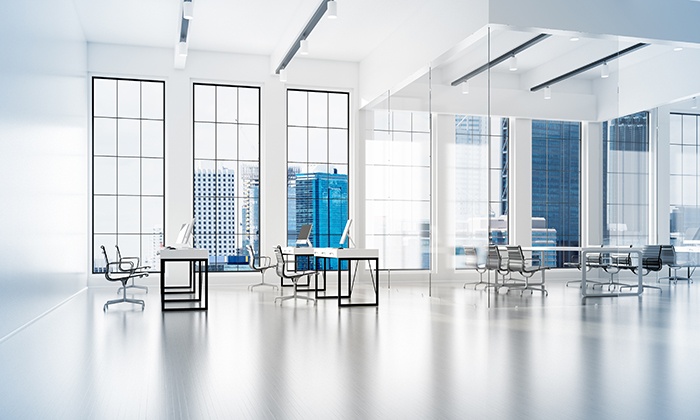
Here are the seven hottest trends that we are see for 2018 and beyond.
1. Horizontal Office Space
Large companies are beginning to look at campus-based office space again. While "going horizontal" might not be an option in the largest and densest cities, the benefits of having more workers on a floor and less height to imply hierarchy are coming back into vogue. Employees prefer this layout, and companies that have gone (back?) in this direction have seen increased productivity.
2. Bigger Monitors
As multitasking becomes more and more common at work, companies are going beyond the standard double LCD setup. Instead, they are installing much larger monitors, some of which offer futuristic curved surfaces. 32 inch and larger monitors allow employees to see more work more clearly, but may also require rethinking the configuration of your office space and furniture.
3. At Home, At Work
As the lines between work and home blur as a part of employees finding new types of work-life balance, companies are trying to make their office space feel more like home. Office designs now include conversation areas designed like living rooms, outdoor patios and lighting provided by lamps instead of harsh overhead LED or florescent fixtures. The benefits of this movement in office space design include employee willingness to work longer hours as well as the greater efficiency that comes from more comfortable collaboration.
4. Enhanced Branding
More and more designers are looking at office space as an extension of a brand. Branding space goes well beyond have a company logo in the lobby. Space designers now look for ways to not only capture a company's colors and look, but also its deeper feel in furniture, layouts and in all other aspects of an office.
5. Sensors 2.0
The concept of sensors knowing where employees are so that attendance and availability can be tracked while lights and HVAC follow the worker has already been built into many office spaces. The next step with sensors is to measure even more about each employee. Paying attention to sound levels can indicate the type of work an employee is doing while tracking an employee's movements and posture while standing or sitting can provide data that can be used to improve ergonomics or even employee health.
6. A Return to Privacy
While open floor plans are here to stay, companies are looking for ways to reintroduce some privacy into the workspace. Flexible, movable walls and enhanced work room and team room options help let everyone get some space when they need it.
7. Health-Based and Biophilic Design
The innovations in the use of sensors are part of a greater movement towards designing healthier spaces. While LEED compliance is now practically a requirement, the new standard that is emerging is WELL, which measures a building's impact on employee health. Biophilic designs support this goal by bringing nature inside to create spaces that are better for physical and mental health, while also frequently consuming less energy.
Here are a few other articles you might enjoy:
Commercial Leasing Mistakes to Avoid
Top 10 Commercial Office Leasing Tips
Workplace Design Tips for Corporate Tenants
Subscribe to our blog for more CRE tips!!








